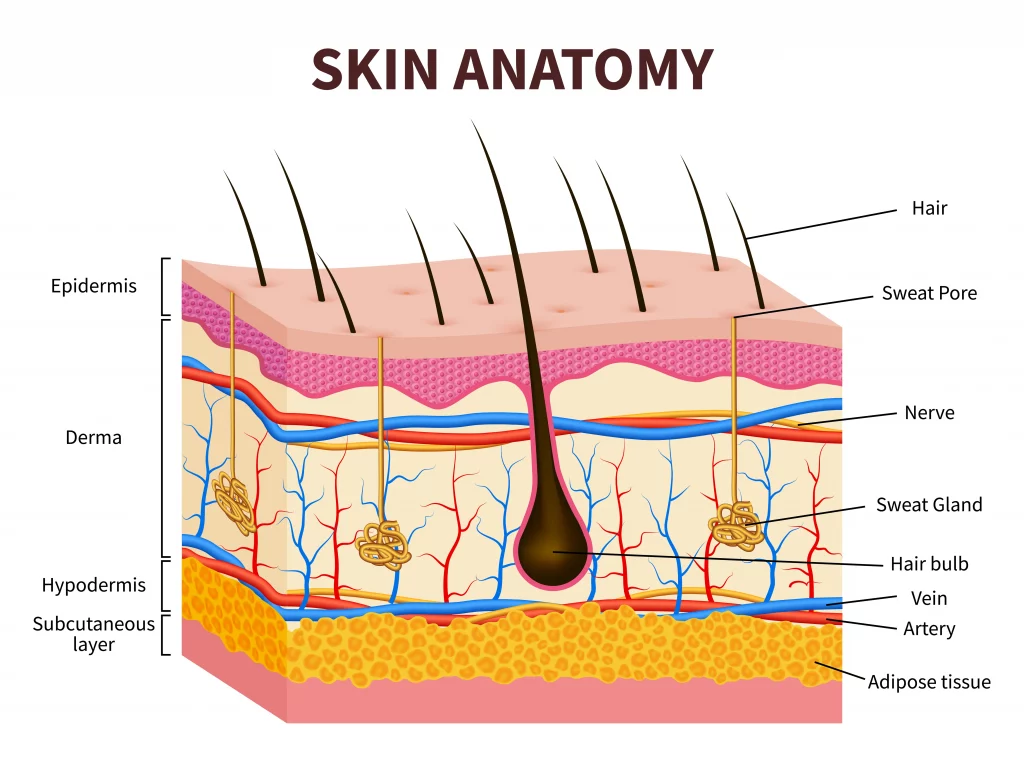Functions of the Skin - The skin's structure comprises three main layers: the epidermis, dermis, and subcutis. The epidermis is the outermost layer of the skin and is made up of tough, waterproofing keratinocytes. Beneath the epidermis lies the dermis, a layer of dense connective tissue containing blood vessels, nerves, and sweat glands. The subcutis, or hypodermis, is a layer of fatty tissue that helps insulate and protect the body.

The structure of the skin helps keep us safe from harmful environmental agents, like UV radiation and bacteria. It also plays a vital role in regulating our body temperature and storing water and nutrients.
The functions of the skin are various and essential:
- Protection: the skin protects us from harmful environmental agents, like UV radiation and bacteria.
- Regulation: the skin helps regulate our body temperature and store water and nutrients.
- Sensation: the skin is full of nerve endings that allow us to feel touch, pressure, pain, heat, and cold.
- Excretion: the skin helps to excrete waste products through sweating.
- Immunity: the skin plays an essential role in our immune system by producing antimicrobial peptides.
The functions of the skin are vital to our overall health and well-being. Without healthy skin, we would be susceptible to many health problems. That's why it's essential to take care of our skin and see a dermatologist if we have any concerns.
Now that we know the skin's structure and functions, let's talk about how to take care of it.
The best way to take care of our skin is to prevent damage in the first place. That means using sunscreen when we go outside, avoiding tobacco smoke, and eating a healthy diet.
If we damage our skin, it's essential to seek medical help immediately, especially for burns, wounds, and infections.
In addition to preventing damage and seeking medical help when needed, there are some things we can do at home to take care of our skin:
- Cleanse: use a mild soap and warm water to cleanse your face and body. Avoid scrubbing too hard, which can irritate the skin.
- Moisturize: use a moisturizer to keep your skin hydrated, especially after cleansing.
- Exfoliate: use an exfoliating product or natural remedy (like sugar or oatmeal) to remove dead skin cells and reveal new, healthy skin.
- Protect: be sure to wear sunscreen and clothing that covers your skin when you go outside.
Taking care of our skin is vital for our health and well-being. We can keep our skin looking and feeling its best by following these simple tips.